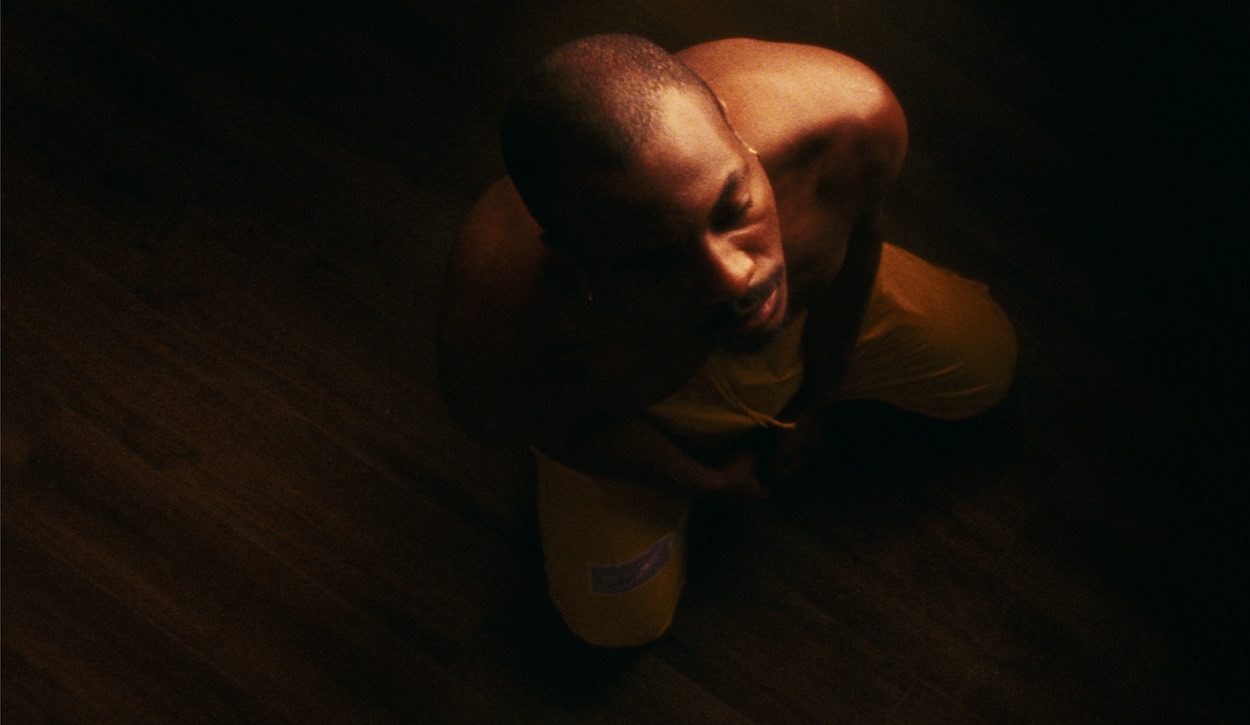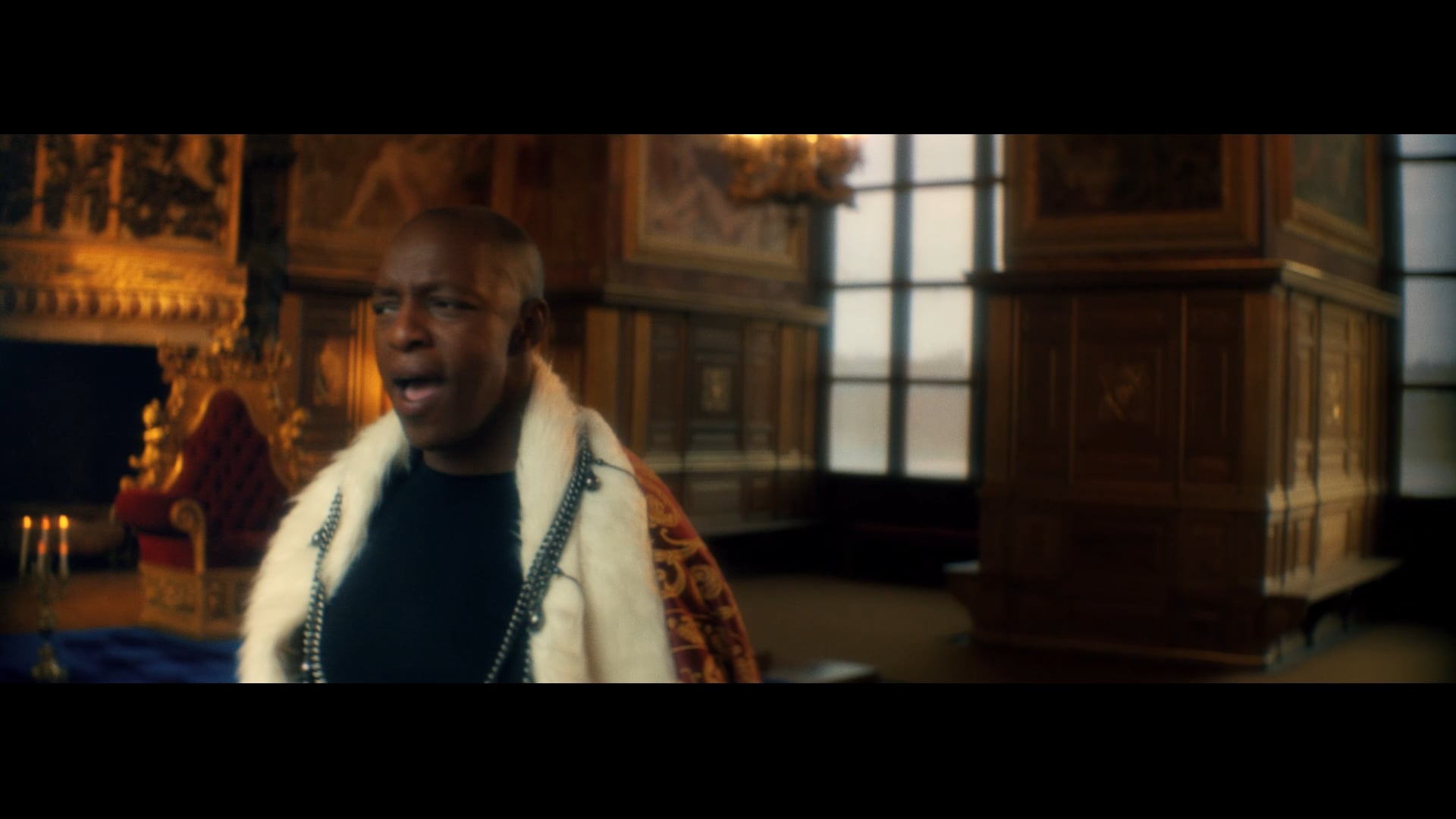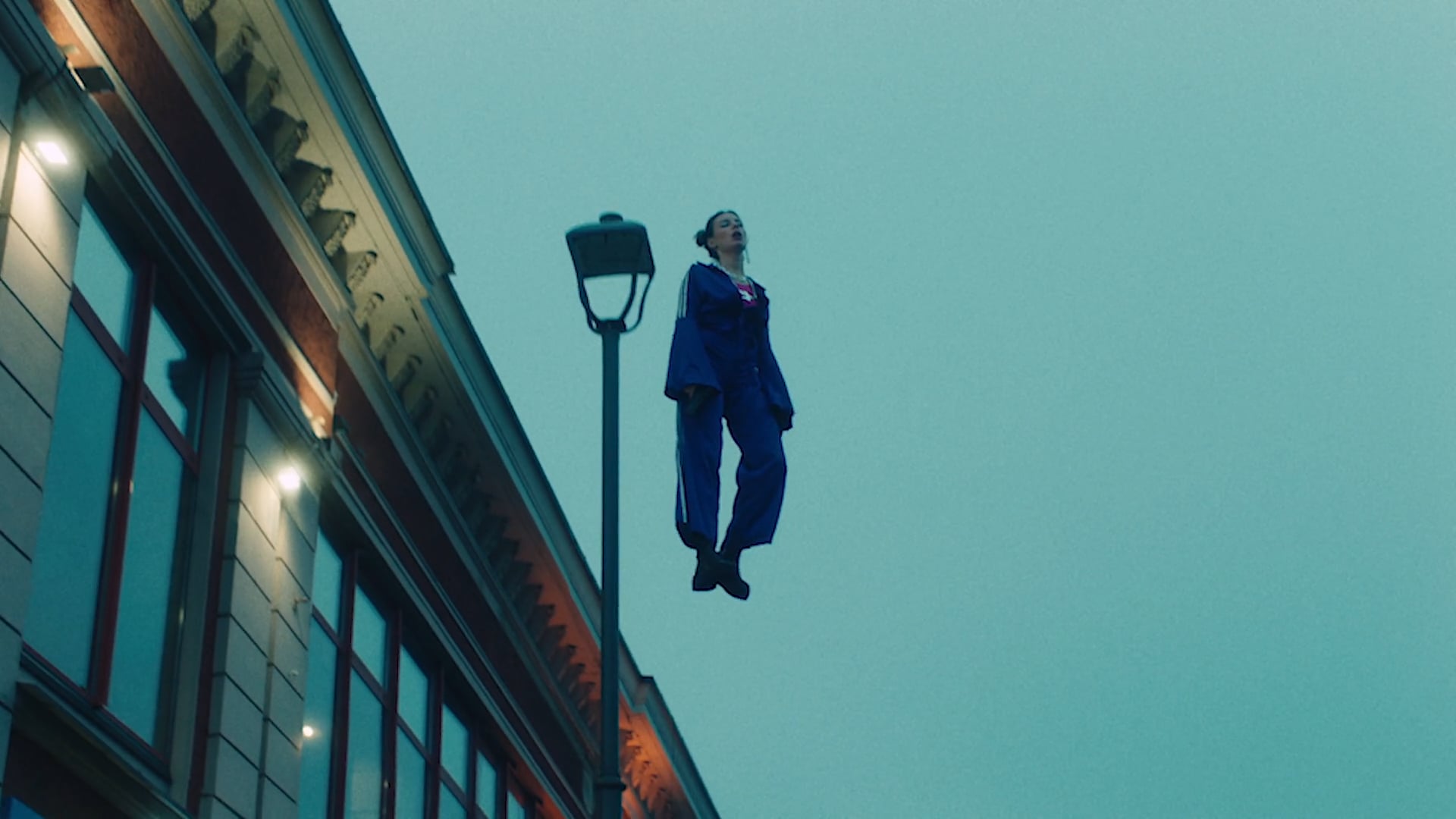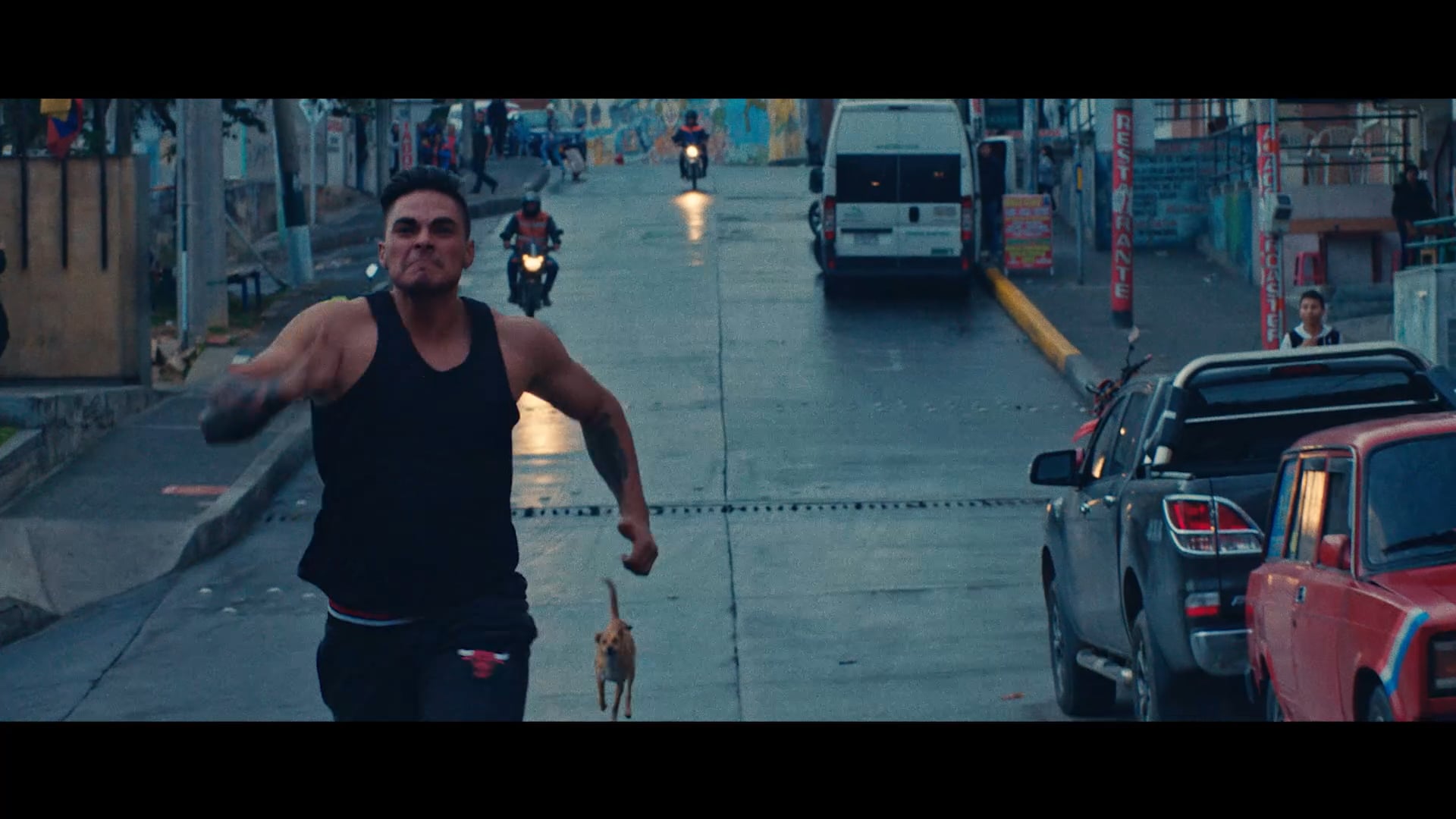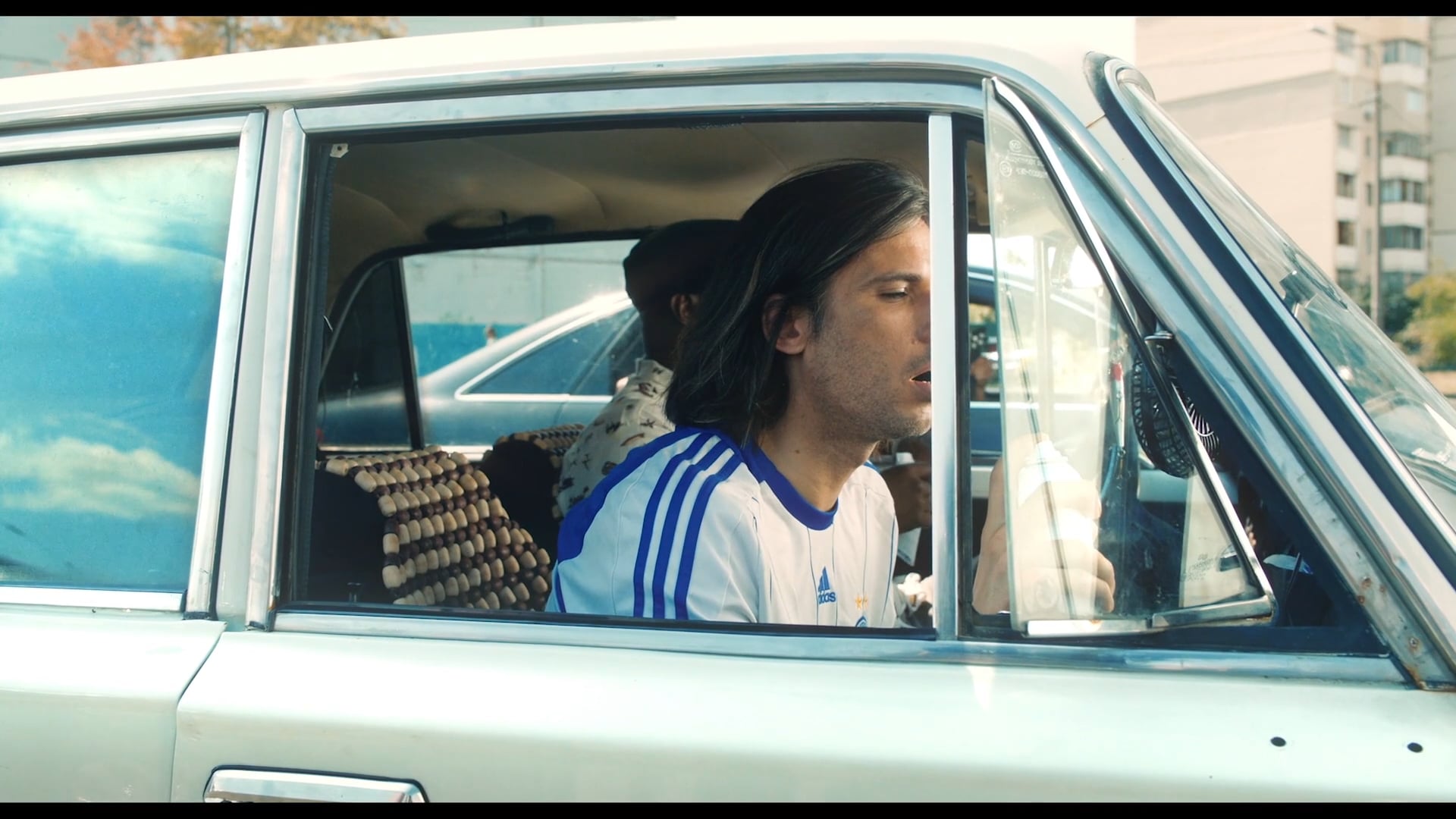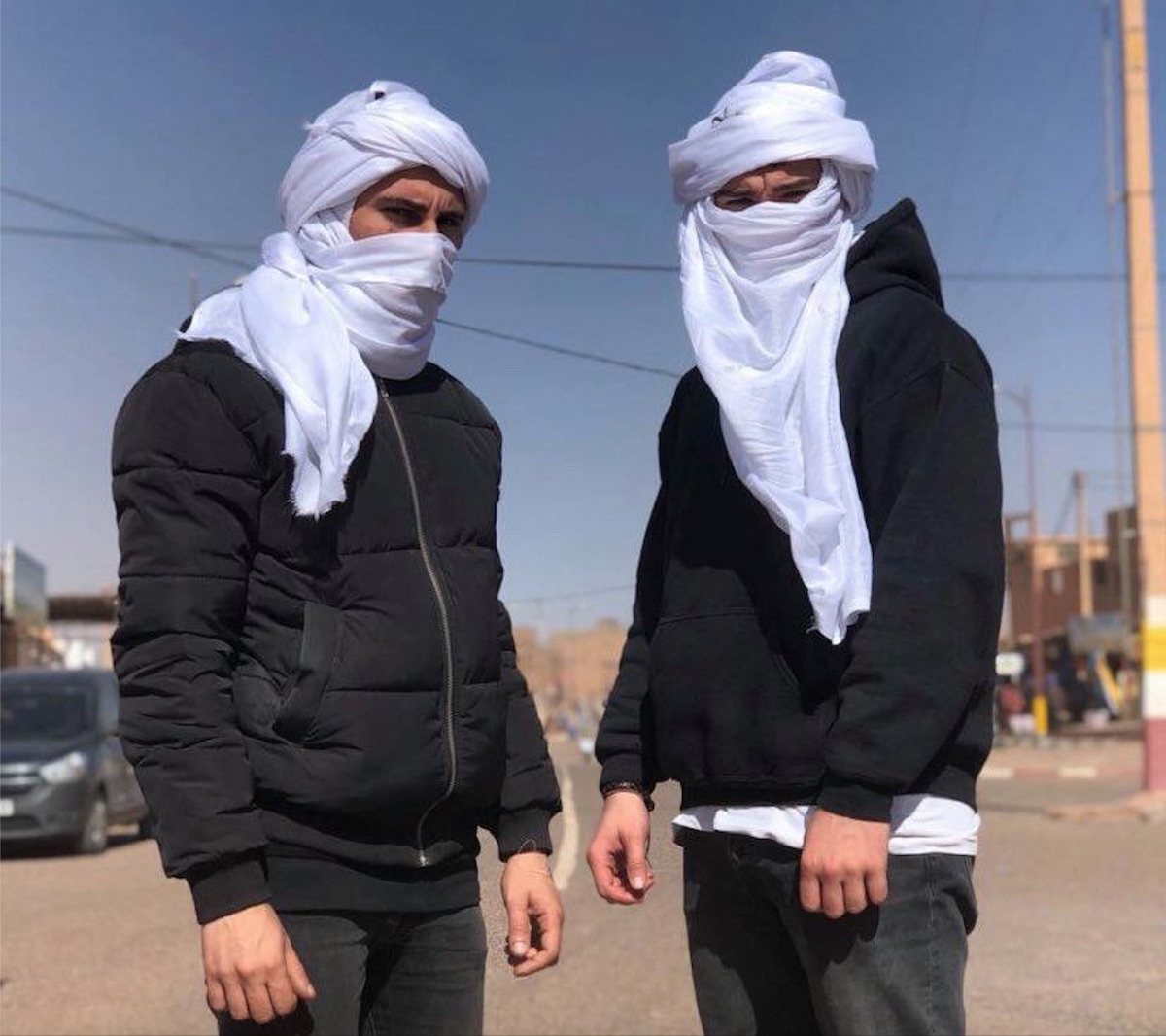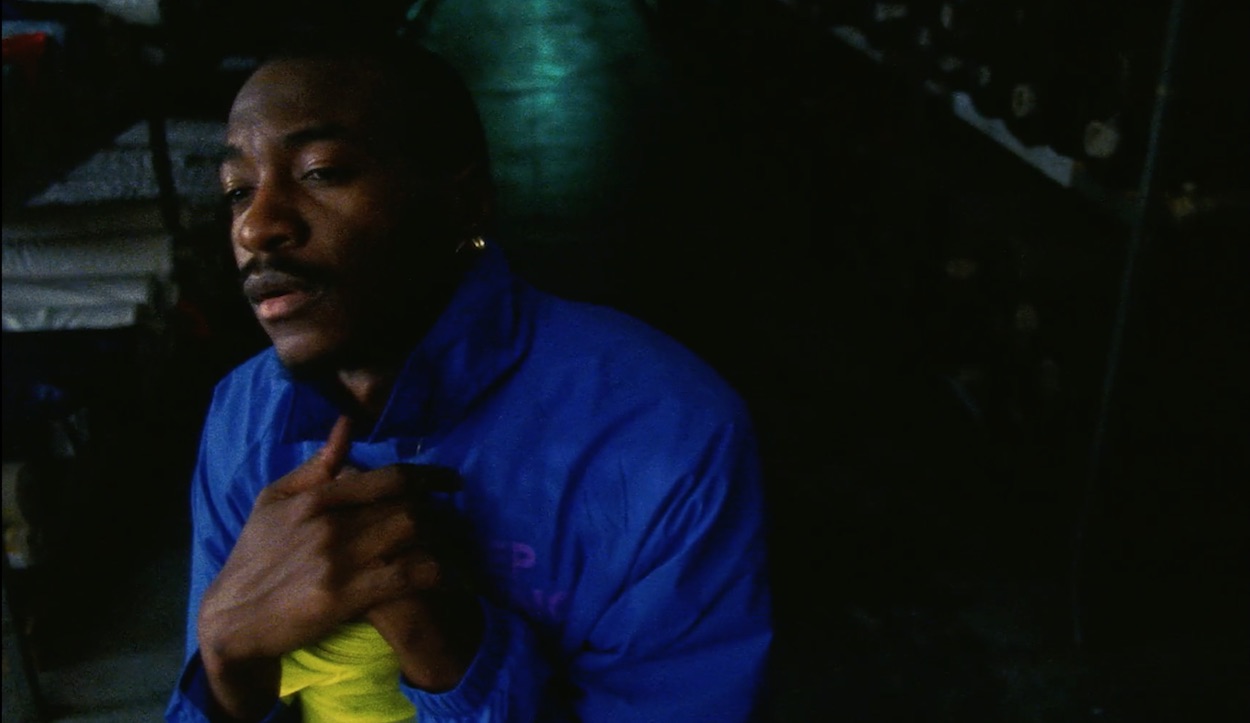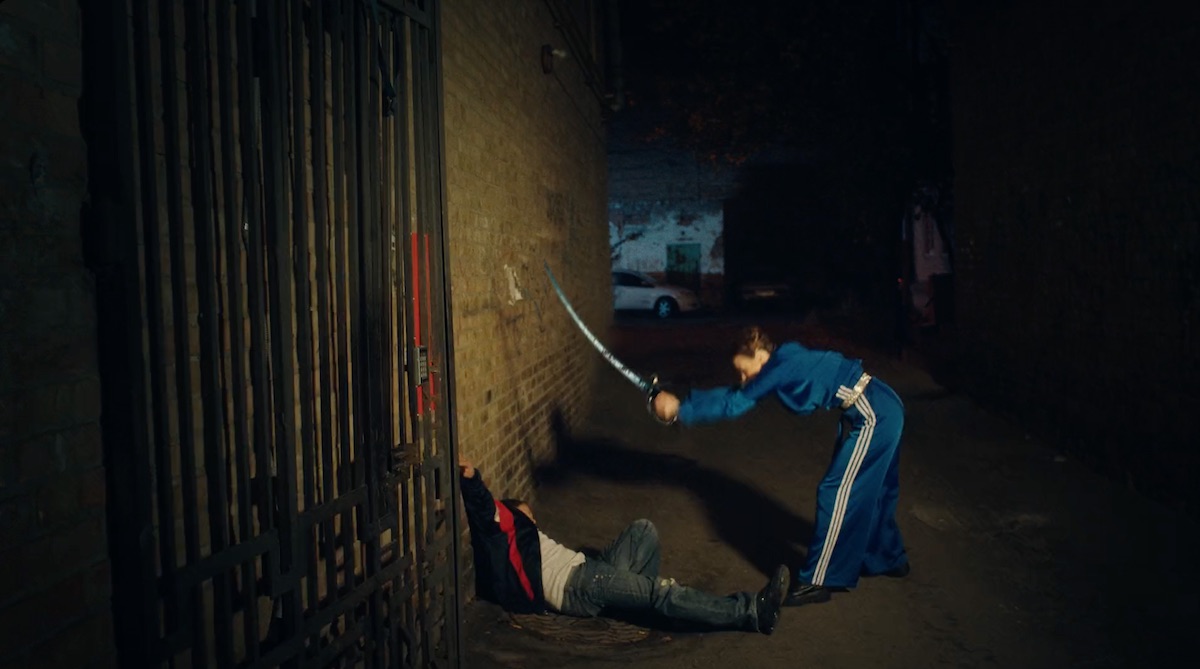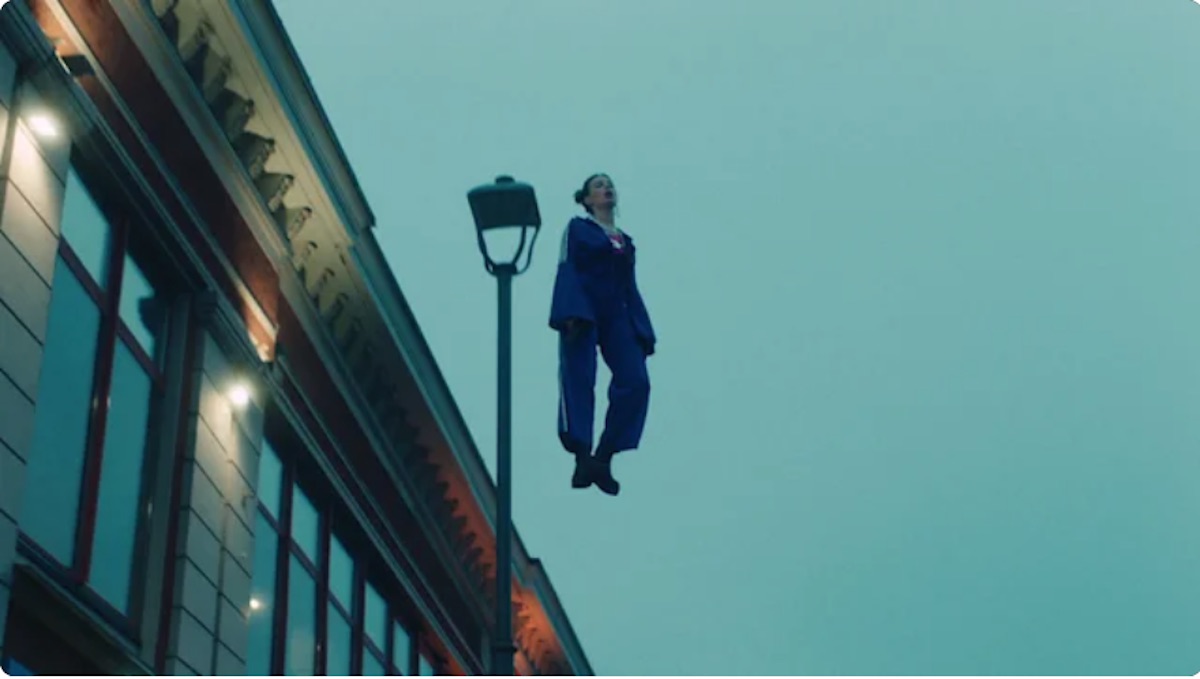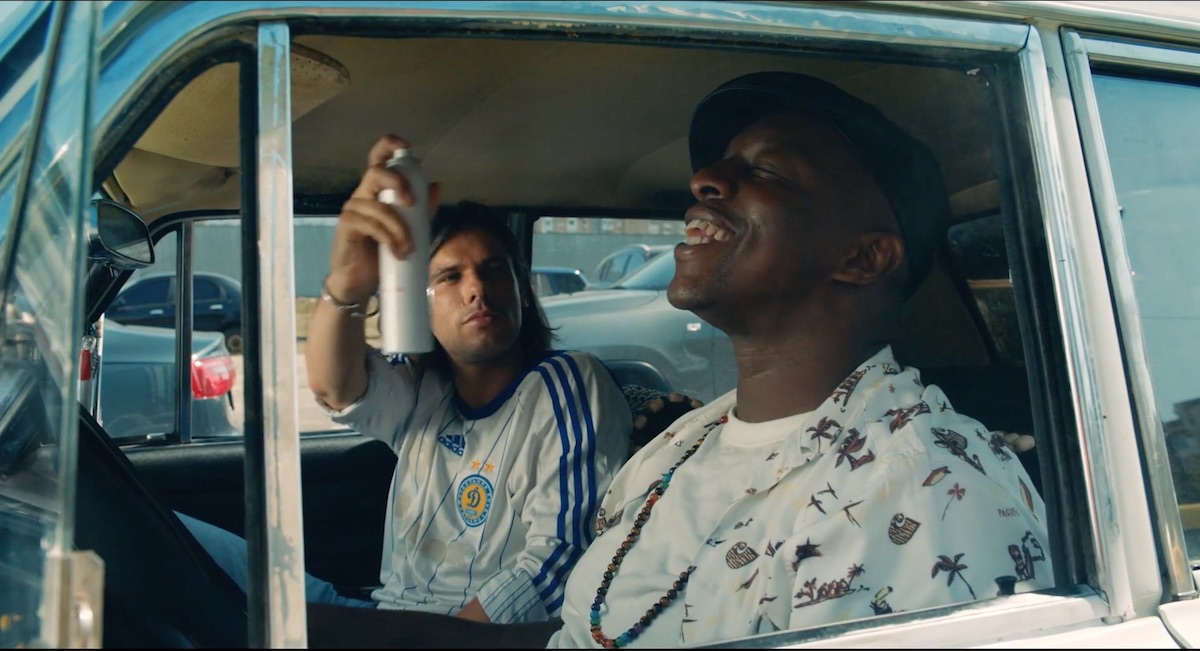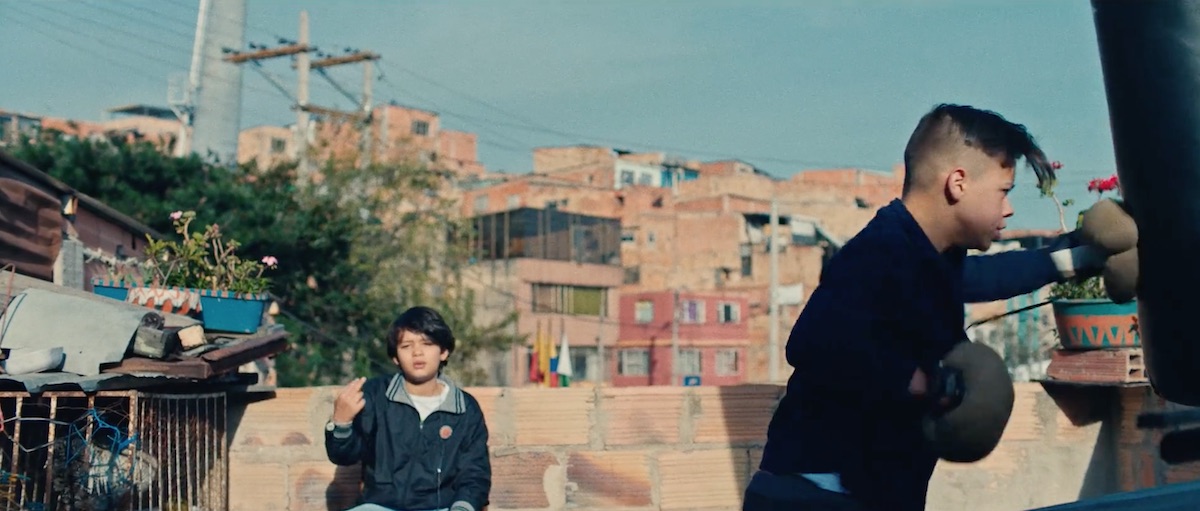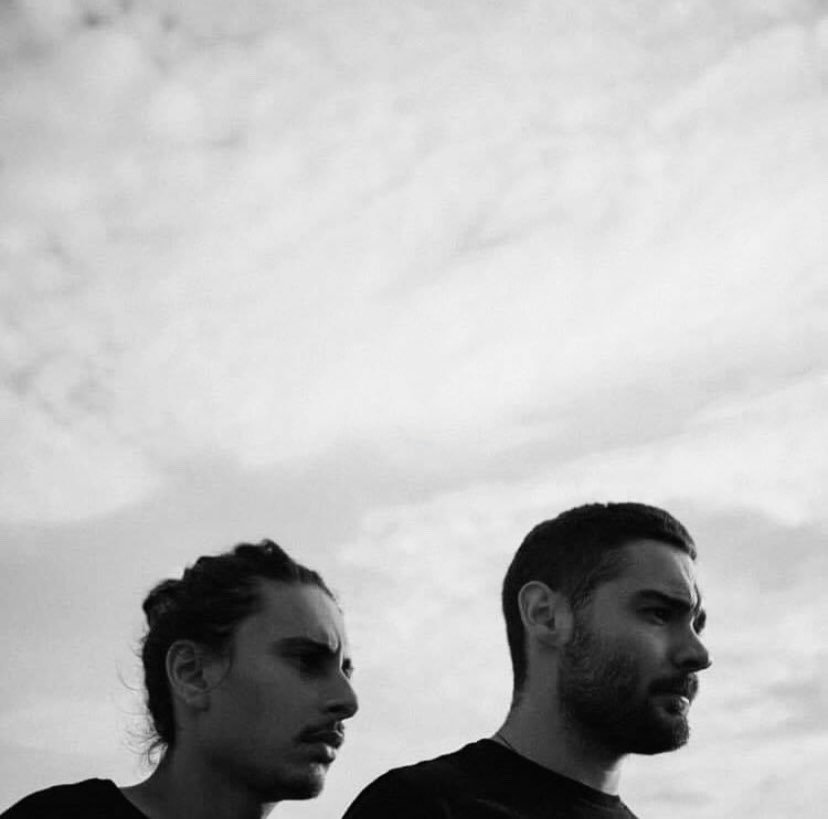Original Kids
You’ve been friends since childhood – how did you end up directing together? Tell us a bit about your career journeys…
We are childhood friends and went to film school together where we did all our projects together, one in production speciality and the other in light. Two years after finishing film school, we’d taken parallel paths and hadn’t seen each other for a while, but then Kevin founded a clothing brand and organized an event for its launch. Neither of us had taken the step to start directing yet – I don’t even know if we were seriously considering it – but that night of the launch, we said to ourselves that it would be a shame not to go for it.
Two days later, we directed our first project together, thanks to our respective contacts in music. We had to do about fifty projects in a year and a half where we did everything ourselves, often putting the little money we had into them. It’s the passion that drives us!
That first year, we drove around in an old Peugeot 106 edition, the “Original Kid” of 1998. It went through everything with us, so our name is a kind of homage.
We love every facet of our job, it’s a huge chance to be able to express ourselves artistically in a professional environment and that’s why we’ve never been afraid to be versatile and to always get out of our comfort zone.
Directing has made us live through some crazy experiences, going back and forth from Paris to Manchester in the old 106, shooting in places that are normally inaccessible because it was too dangerous, sometimes a few accidents – but above all, a lot of sharing with all the people we were lucky enough to meet. To be able to express our vision of a situation, to succeed in translating feelings representing a part of our personal history into an image – that is what has always motivated us.
As well as sharing common values, we have complementary personalities: Kevin is more extrovert while Loïc is a little more introvert, which brings a daily balance in our personal and professional relationships.
We question ourselves professionally in an almost existential way all the time. We are not afraid to tell each other when things are going well, but also when things are not going well and that is why the partnership works so well.
Roger
Your latest short film centres around designer Roger Mbee, an old friend of yours who recently launched his own fashion label. How did the collaboration come about and why did Roger’s story deserve to be told?
We have known Roger since we were kids; we grew up together. Like us, Roger is a passionate person and we’ve always shared ideas with him, points of view and ways of thinking. Where we translate an idea into an image, he translates it into clothing, but the creative process remains the same!
Last year, after many collections and hours of work he got some great opportunities in the States and found himself dressing artists like Kendrick and Billie Eilish among others. This experience motivated him to go further and he set himself the goal of working 365 days non-stop, with a new creation almost every day. He transformed his apartment into a studio and started working day and night. At that time, we had several project ideas, but it was this commitment that we wanted to capture visually. It was important to us, because it’s a total devotion to his art and it is an aspect that we share, it’s not uncommon for us to have insomnia and to call each other at night to swop ideas. We live for directing, everything in our life and our daily life revolves around that, creation and the will to express ourselves, and it’s the same for Roger.
We began to write and the film took shape naturally. Our producers at Quad Stories, Romain Manson and Saydé Bayrak, immediately followed us on the adventure! For us, it was essential that this film was, above all, a film made ‘within the family’ and talking about family. It’s perhaps the main theme of the project. There was very little chance of the three of us getting to where we are today: we come from the suburbs of Paris, from poor families and it hasn’t always been easy. Until recently, the one thing we have always been able to relate to are our families: the love they give us, and that we give them. In one sense, this film is about commitment to our art, but our art cannot exist without our families, so we are essentially talking about them: our families who have given so much and for whom we must succeed.
That’s why Roger’s story deserves to be told because it’s also ours – and the story of so many people from so many different backgrounds. We speak of love through the prism of a passion, and speaking of love is universal!
Therapie Taxi, Candide Crush
Your most recent video for French pop group Therapie Taxi, Candide Crush, is an enjoyable empowered-woman narrative with more than a few nods to Kill Bill, as the lead singer takes out a host of lecherous men in creatively violent ways. What inspired the concept for the video, and how closely did you work with the band?
That was actually our second synopsis! The first one told the story of Adelaïde (the singer of the band) falling in love with a burger that spent most of the film off-camera, in spite of all the men gravitating to her. It was all about those guilty little pleasures. But maybe it was too much to take the title at face value…
So we decided to start over and talk about respect for women. We felt that there was a lot of melancholy in the song and naturally in Adelaïde’s voice, but outside the band, the universe is quite offbeat and exudes a lot of joie de vivre. That’s why we wanted to lighten our staging a bit. It’s too important a subject in our society to be able to talk about it in three minutes 30 seconds. So we decided to treat it with a bit of black humour, which is also an excellent way to raise awareness.
It’s also a subject that’s very close to our hearts. Kevin grew up with his grandmother from 15 years old and Loïc was brought up by his mother. Their stories about the place of women in society are countless. Kevin’s grandmother lived in Porto until she had to come to France illegally to escape the Salazar’s dictatorship. As a woman and an immigrant, she has faced many difficult situations here, including a lot of trouble with her son. Loïc’s mother was a single mother, living in a suburb near Paris. There are dozens of stories she told us about men masturbating on the RER A (Europe’s busiest transport line), stories of moral and physical harassment at work, superiors asking her to put her personal life aside, and we won’t even talk about the huge salary gap throughout her professional career. When we were kids, we couldn’t find housing – one year we almost ended up on the street. There is almost no help for single mothers.
We’re probably getting a bit off the subject, but for us, it’s all connected because there is still so much to do. It’s not a generational problem, misogyny has always been omnipresent in our society and our generation is one of the first to really be able to change things. That’s why it’s an important theme for us.
We had very little preparation time, so we had to have a lot of exchanges with the group to be sure of the direction we were taking. We agreed on the concept very quickly (Adelaïde wanted to include photos of women who inspire her, like her mother, her sister and Janis Joplin, on the walls of her room in the clip), but some doubts definitely remained. It was Antoine Guéna, the band’s manager and the director of their label Panenka, who has known us for a long time and trusts us enormously, who supported us in this Kill Bill aesthetic.
Therapie Taxi, Candide Crush
Much of your reel has a gritty and streetwise aesthetic: who or what are your biggest influences and inspirations?
We have different influences depending on the stages of our lives – it’s quite cyclical! It depends on the theme that we’re dealing with, our state of mind etc. We like to tell a story or translate an atmosphere visually and sensitively, while mixing the rules of radically different universes. We might, say, take a very contemporary story of delinquency in a neighbourhood and treat it with a visual grammar similar to Charles Laughton’s Night of the Hunter. We like the mix of social and generational rules.
But of course, directors and artists play a very important role in our lives. A few years ago, Nabil Elderkin directed an exceptional video clip for Foals’ Late Night which completely changed our vision. And there are directors like Dexter Navy or Megaforce who push visual and emotional boundaries, telling stories in such a different way to what we are used to seeing. Spike Jones is also a huge inspiration for us because of the way he takes and transforms the rules. We admire the work of artists such as Nadia Lee Cohen, Georgia Hudson, Martin Parr and Oscar Hudson, and in photography, William Eggleston, Min Hyun-Woo, Gordon Parks, Alex Webb or Chris Steele-Perkins.
We are also enormously influenced by film directors like James Gray, Tarantino, Denis Villeneuve, Martin Scorsese, Alfonso Cuaròn, Iñarritu, Maïwenn, Guy Ritchie, Mathieu Kassovitz, Félix Van Groeningen, to list a few.
It’s quite difficult to talk about all these influences because there are so many of them, and it’s only a small part of what has nourished us artistically. Most of it comes from what we experienced when we were young: we grew up in this socially and financially difficult, but also multi-cultural and supportive world.
When we talk about bailiffs, about not having enough to eat some days, about violence, these are things that we lived through and that deeply marked us. The tears of a single mother who doesn’t know if she will be able to feed her son that month because her salary has been halved due to cancer, or of a grandmother who sees her son going to jail for robbery and other crimes – that was part of daily life for us. When we capture an image with certain lighting, a particular frame, it’s not just a search for aesthetics. We really try to visually translate emotions and feelings as authentically as possible.
Ma Life
As a directing duo, how do you divide up a job in practice?
It depends a lot on the project! We write all the time together, we exchange dozens of ideas every day, at night. We’re often in a bidding war for ideas, one will say a sentence that will lead the other elsewhere and so on. Then on the shoot, we’ll switch between technique and direction. But generally we do both at the same time, we often say the same sentences at the same time, it’s almost scary!
We also trust each other 100%, so we listen to each other a lot when there are doubts. Working with our 1st AD Jordan Stupnicki is essential, he knows us by heart and helps us focus. Otherwise we would sink into madness….
You’ve already directed videos for several high-profile French rappers and hip-hop artists including Oxmo Puccino and Georgio – are there any artists you’d love to work with, and why?
Our ultimate goal would be to work with Kendrick Lamar because for us, right now, there is no one who talks about social and emotions as accurately as he does. Then there’s MIA: her commitment is exceptional, she has a strong message for each project and she treats it visually with codes that are similar to ours.
Then there’s IAMDDB and Mahali, A$AP Rocky and Slowthaï, and Anderson Paak – because he gives off an immense joy for life and we could go super far artistically. It would also be incredible to collaborate with Alt-J. Their universe is very cinematographic, socially committed and assumed, and in the long run this is the direction we want to take.
Georgio, Miroir
As well as directing, you work as photographers; how does that influence your directing work, or vice versa?
We often come up with concepts by putting all the images we have in mind on paper, right from the beginning. Thinking of each project as a succession of photographs is the most natural thing for us. Then, we try to ensure that the images we have in mind are also relevant in movement. This is probably the most complicated phase, because a photographic idea is not always going to translate in the same way once in motion. But the two creative processes are intimately linked.
At the moment, we are looking for quite different things in photography. We are on a very natural approach of photo-reportage, capturing images without filters or alteration of the world around us. Whereas as directors we want to mould things to our vision and won’t hesitate to play around with the rules, in order to take the viewer somewhere unexpected.
What was your lockdown experience like, and what are you working on at the moment?
We spent lockdown separately, and it was the first time we hadn’t seen each other for more than a week in five years. The first month was hard because of cancelled projects, but we finally had a good rest – we hadn’t taken a vacation for a year and a half! Then we spent the next few months calling each other every day, working on ideas for short films and out-of-format projects. We did a lot of sports but also ate well – tartiflettes and homemade linguine.
We’re currently working on a video for Octavian that will be released soon, and also on a feature film project. It’s time to get started!
Interview by Selena Schleh
Original Kids
